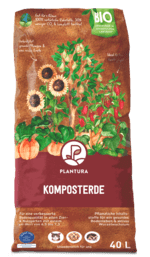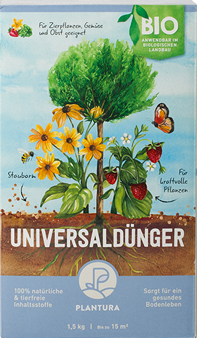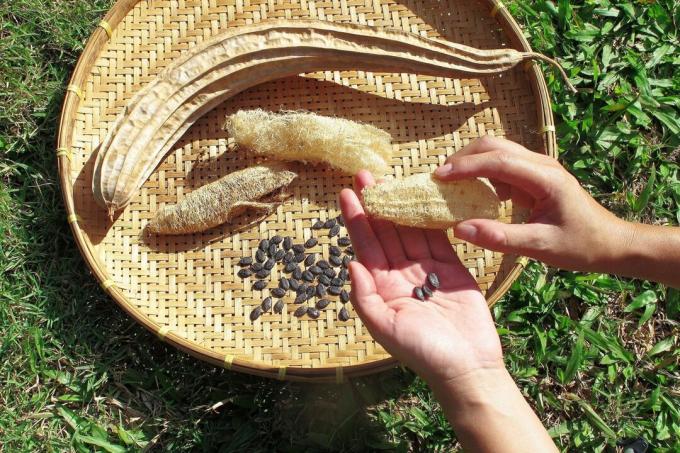The luffa cucumber is usually not primarily grown for consumption – sponges can be produced from the fruit of the useful plant when ripe and dried.

With simple means and a little patience you can produce sustainable and biodegradable sponges yourself from the luffa cucumber in your own garden. How to make the loofah (Luffa cylindrica; Syn. Luffa aegyptiaca, Momordica cylindrica) successfully grow yourself and what needs to be considered when harvesting and using the sponge gourd, you will learn in this article.
contents
- Loofah cucumber: origin and properties
-
Grow your own luffa cucumbers
- Location
- sowing
- The right care
- Harvesting and using luffa cucumbers
- Can you eat loofah cucumbers?
Loofah cucumber: origin and properties
Because of its intended use, the luffa cucumber is also known as sponge gourd or sponge gourd. The annual climbing plants belong like that cucumber (Cucumis), the zucchini (Cucurbita pepo
subsp. pepo convar. giromontiina) and the pumpkin (Cucurbita) to the pumpkin family (Cucurbitaceae).Wild forms of the luffa cucumber can be found from southern central Asia to north-eastern Australia and in the South Pacific. The cultivated forms of the plant can be found in tropical Asia, America, Latin America and Africa. Sponge gourds are best cultivated in the hot, humid tropics during the dry season. The plant thrives particularly well in fertile soil that is slightly acidic to neutral and in a sunny location.
Under optimal conditions, the climbing plants can grow up to 15 m long and their habit is very similar to that of cucumbers. The pentagonal shoot axis is slightly hairy and the leaves have long stalks and are slightly to deeply lobed. The plant bears male and female flowers, which have the same bright yellow corolla. The female flowers can be recognized by the 2 to 4 cm long ovary. They sit individually on the plant - the males usually have 5 or rarely 3 stamens and stand with a number of 5 to 20 flowers on long panicles. However, they arise from the same leaf axil.

The fruits are about 60 to 80 cm long on average and are initially green and have downy hairs. Later the peel turns brown, thin and papery. The dull black, smooth seeds of the luffa cucumber are broadly elliptical with rounded ends and have a narrow, winged margin.
Grow your own luffa cucumbers
You can also grow the sponge gourd in Germany, but here the plant does not reach the same height as in the tropics.
Location
Above all, the sponge cucumber needs warm site conditions, i.e. preferably full sun and sheltered places. Planting in a greenhouse is ideal for this, if one is available. The soil should be humus, fertile and loose. If you want to improve your garden soil, mix in some compost for optimal nutrient supply and some sand to loosen compacted soil. In order to get a fertile soil, ours can do the same Plantura organic compost be mixed in. The high humus content of our soil not only benefits the luffa cucumber, but also ensures a stimulated growth in the long term biological activity in the soil and increasing fertility, which also results in an improvement in the heat and water balance Has.

Plantura organic compost
Organic, peat-free & climate-friendly:
Also ideal for raised beds
ensures a rich, aromatic harvest
sowing
The sowing of the luffa cucumber in the house for pre-cultivation is recommended. This allows a certain head start to be achieved, which ensures that the fruit fully ripens. We describe how to do this step by step in the following instructions.
- Timing of sowing from March to April
- Soak loofah seeds in water for 24 hours
- Fill pots with seed compost
- Sow seeds 1-2 cm deep in the pots
- Keep substrate moist
- Germination temperature between 20 and 25 °C
- Germination time 10 - 20 days
- Plant outdoors from mid-May
- Planting distance of about 50 - 60 cm
A south-facing balcony is also a potentially suitable place for the luffa cucumber, as it can also be cultivated in a pot. This should have a capacity of at least 15 liters. When planting in pots, it is important to ensure that there is a drainage facility for excess irrigation water. A drainage layer of expanded clay should also be filled in the lower part of the planter and a permeable, nutrient-rich vegetable soil is suitable as a substrate. It is also necessary to attach a climbing aid, unless the plant can climb along a railing, for example.

The right care
Since the luffa cucumber requires constant soil moisture, it should be checked regularly whether the soil is already drying out. Watering is often necessary, especially in the greenhouse.
A good supply of nutrients should also be guaranteed at all times. It should be noted that the fertilizer doses are not extremely nitrogenous, otherwise flower growth could be inhibited. Ideally, add some compost to the soil when planting and apply a slow-release fertilizer about 2 months later. For example, our is suitable for this Plantura organic universal fertilizer, in which the balanced ratio of nitrogen, phosphate and potassium avoids that parts of the planting show developmental disorders. The high proportion of organic starting materials also promotes the development of the root system and soil life.

Plantura organic universal fertilizer
effective long-term effect,
good for the soil, harmless for humans, animals and nature
In addition, the climbing plants can be provided with a growth aid, such as a trellis to guide them up. Outdoors, the plant can also climb along the ground. However, a layer of mulch is then recommended.
Removing the first flowers and fruit buds is also a sensible care measure. The energy is channeled into the growth of the plant and the leaves and ensures that more fruit will form later and the luffa cucumber will be strong and robust.
In unsuitable locations that are too shady or too humid, there is an increased risk of infestation mildew, so be sure to choose a place with suitable conditions.
Harvesting and using luffa cucumbers
The right time to harvest to make a cucumber sponge is when the skin of the fruit is yellow and brittle and covered with small brown dots. It should also sound hollow when you tap the case. The first ripe fruits can be expected around September. Now you can harvest the loofah cucumbers and put them in a dry, sunny place for several days. Then the stem and flower base are cut off with scissors and the shell is peeled off. The seeds can be extracted by shaking or kneading the tissue and used for next year's sowing. The remaining pulp is washed out, and the cucumber sponge is dried in a warm, airy place.

Cut to the desired size, it can now be used in many different areas of application. In the cosmetics or hygiene sector, it is used, for example, as a peeling, shower or bath sponge, or in the kitchen as a cleaning sponge for pots and surfaces. The loofah sponge is also very suitable as a sustainable gift.
Can you eat loofah cucumbers?
When the fruits of the plant are harvested when young, the luffa cucumber can be eaten. In Asia in particular, it is usually consumed as a vegetable. It can be eaten either raw or steamed and tastes a bit like zucchini. The same applies to the flowers of the plant. Edible oil can also be pressed from the protein and fat-rich seeds of the luffa cucumber.
Another plant whose fruit can be prepared in the same way is the Inca cucumber (Cyclanthera pedata). You can find out more about the South American climbing plant in our special article.
...and receive concentrated plant knowledge and inspiration directly in your e-mail inbox every Sunday!



